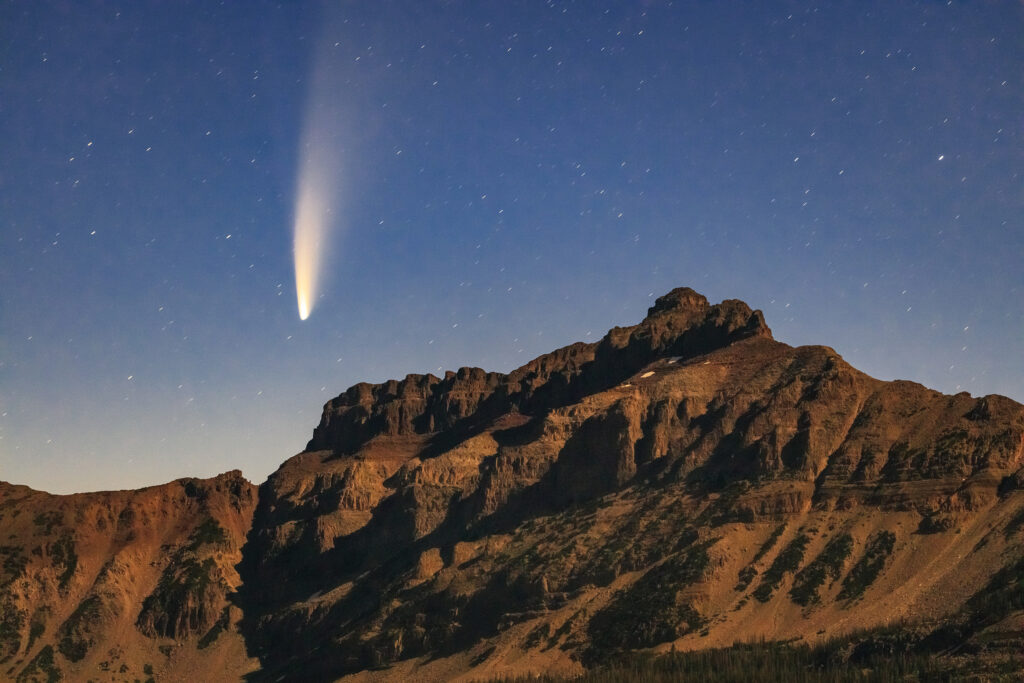NEOWISE comet will be in view the next few weeks
By Ben Olson
Reader Staff
If there’s ever been a time to shut off the noise of the terrestrial world and look up to the heavens, now is it.
The comet C/2020 F3 (known as NEOWISE) has been in view in the morning hours before sunrise for the last couple of weeks, but in late-July and early-August, stargazers in northerly latitudes will have an opportunity to see it after sundown.
NEOWISE is a three-mile-wide comet that orbits Earth every 6,800 years. So, unless you’re a vampire or have found eternal life elsewhere — and will be around in the year 8786 when it circles back — this will be your first and last chance to catch the celestial object in our night sky.
As of July 12-15, NEOWISE will begin to be visible at dusk, just after sunset. It will appear low on the northwest horizon. After July 15, look just below the Big Dipper to view the comet. Binoculars or a telescope are necessary to see the comet’s tail.
NEOWISE will be closest to Earth from Monday, July 22 to Tuesday, July 23, passing some 64 million miles from our planet. It swung close to the sun on July 3, passing at about 26.7 million miles — a bit closer than the average distance from Mercury’s orbit. Unlike some comets, NEOWISE survived the close encounter with the explosive center of the solar system — some aren’t so lucky and are captured by the sun’s gravitational force, ending their long journeys in a fiery extinction.
A “great comet” is one that is visible with the naked eye. The last great comet visible from Earth was Hale-Bopp, which passed by in 1997. NEOWISE is not a great comet, but is known as a binocular comet because it’s only visible with the naked eye as a blurry smudge. One must train binoculars or a telescope to the sky to view its impressive tail.
NEOWISE will continue to be visible in the night sky after sundown until mid-August, when it begins its 6,800-year journey to the outer reaches of the solar system before returning to Earth.











 Coming up this week! Don’t miss Live Music, the Summer Sampler, the Art Party, Monarch Grind, the Sandpoint Renaissance Faire, and more! See the full list of events in the
Coming up this week! Don’t miss Live Music, the Summer Sampler, the Art Party, Monarch Grind, the Sandpoint Renaissance Faire, and more! See the full list of events in the 